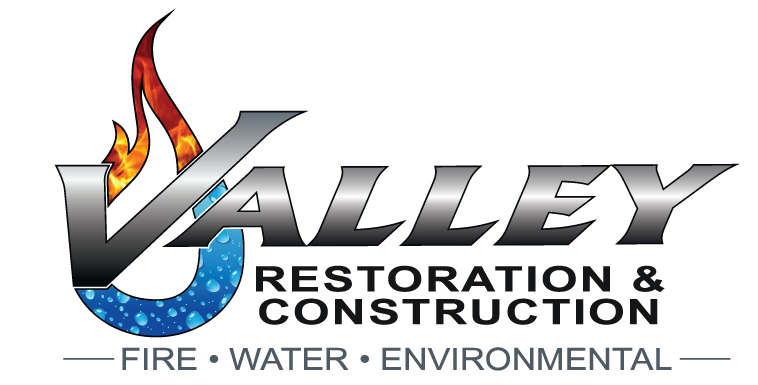Most people may find it hard to believe that summer can help mold grow. As a mitigation and restoration company, however, we have first-hand experience of how fast mold builds up in hot and humid summers.
Summer humidity and warm temperatures are the perfect conditions for mold to expand throughout your home. Once established, mold creates unsightly discolorations on walls, furniture, and floorings.
This, however, is the least of your worries. Extended exposure to mold spores may cause allergic symptoms such as sneezing, itching, coughing, watery eyes, runny nose, headache, fatigue, and more. Left untreated, mold can even increase a person’s sensitivity in the long term, causing health problems and allergic reactions.
If the problem has already spread, you need the help of mold experts like Valley Restoration and Construction to mitigate the problem and eradicate the mold. When mold has taken hold of an area, simple homemade cleaning methods are not strong enough to clean out the mold spores.
Prevention, though, is always better than remediation. Now that summer is upon us, here are a few useful steps you can take to help your home remain healthy, dry, and mold-free.
What Does Mold Need to Grow?
When thinking about mold, it’s good to remember that mold spores are everywhere. You can’t eradicate all the mold spores around you, simply because it’s impossible.
You can, however, make the surrounding conditions unfavorable to their development:
- Mold needs warm temperatures, moisture, and something to grow on. The perfect temperatures for mold spores to grow are between 77 and 86 degrees Fahrenheit, which are pretty much the temperatures we have in most of the US in the summer.
- Mold also requires humidity. Puddles, humid air, steam, and other sources of humidity help mold spores thrive.
- Finally, mold needs something to feed on. That is usually paper, wallpaper, cardboard, insulation materials, and wood. Very often, mold settles on dust and dirt.
Summer Heat and Humidity
Warm summer temperatures are great for outdoor activities, BBQs, and other fun events. Unfortunately, they are also perfect for mold.
Summers in the US are often accompanied by high relative humidity. When the outside air is too humid, it inevitably enters our homes. Together with warm temperatures, these are the perfect conditions for mold to spread.
How Can I Prevent Mold Buildup in the Summer?
Ventilate Your Home
Proper ventilation allows air to flow in and out of your home. You should be particularly careful about ventilating rooms that, by nature, produce a lot of steam and humidity, such as bathrooms and kitchens.
Make sure your fans work properly and turn them on when you are cooking or taking a shower. If you don’t have any exhaust fans in your home, perhaps it’s a good idea to install them to help air circulate freely.
Use Your A/C
Your A/C unit will bring down the temperatures in your home and lower the humidity levels. These together will make the conditions harder for mold to grow.
You shouldn’t run your A/C too low, though. It is generally recommended to have a home ambient temperature of around 78 degrees Fahrenheit.
Install a Dehumidifier
A dehumidifier will take away excess humidity from your home. Pleasant internal relative humidity levels hover between 30% and 50%. Anything above these levels feels uncomfortable and stifling—and is also a great breeding ground for mold spores.
You can install a central dehumidifying system to maintain a steady humidity level in your home. A more economical solution may be to buy a portable one, which captures water in a tank.
Don’t Dry Your Clothes Inside
You should either use a dryer or air-dry your clothes outside if possible. When you dry your clothes inside, the air that evaporates lingers in your home and increases the overall relative humidity of your home.
When using your dryer, make sure the area is well ventilated so that steam doesn’t stay trapped inside.
Improve Your Insulation
Good insulation will ensure that all your rooms and areas have a relatively constant temperature. Attics and basements are particularly vulnerable to hot temperatures in the summer and cold temperatures in winter.
Mold loves to grow in inaccessible parts of your home such as behind the bathtub, in the attic, the basement, the crawl space, or behind cabinets. Good insulation will provide consistent temperatures and low humidity levels.
Should I Open a Window?
It is a great idea to open a window and let fresh air flow in as long as the external relative humidity is not above 60%, otherwise you are simply bringing humidity into your home.
As a rule, you should keep your windows closed when it’s raining, as excess humidity will enter your home. Alongside warm temperatures, excessive humidity will make mold spores happy.
Make Sure All Leaks Are Fixed
Mold buildup gives you an extra incentive to be diligent with your roof, spouts, and drains. Check your gutters regularly for leaks and fix any blockages so that water doesn’t enter your home. Also, check your downspouts. Once a year, you should check and fix your roof as well, to avoid water leaks in the winter.
Valley Restoration and Construction for Mold Mitigation and Remediation
If, despite your best efforts, mold has taken hold of your home, contact Valley Restoration and Construction online or call us at 970-964-4437 and we will be there to remedy the problem. We are available 24/7 and serve all the areas on the Western Colorado Slope, including Montrose, Gunnison, Grand Junction, Delta, Telluride, and Durango.
